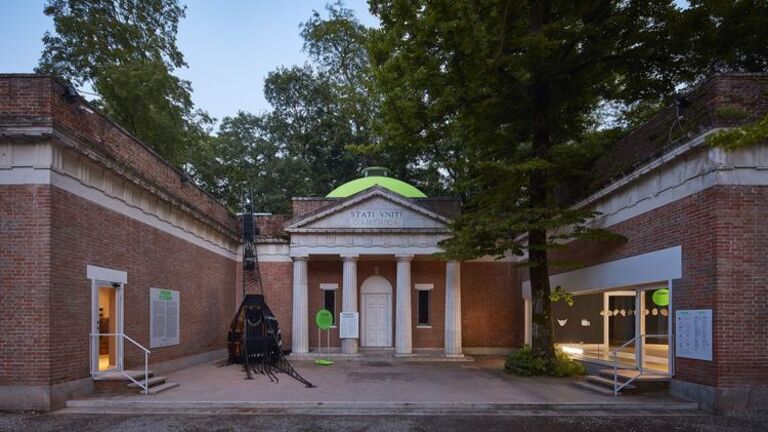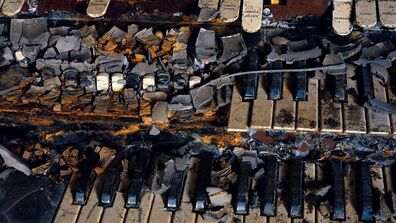
Sneak Peek of the US Pavilion at the 2018 Venice Architecture Biennale
The US Pavilion at the Venice Architecture Biennale commissioned by SAIC and the University of Chicago has been featured in both the Los Angeles Times, the New York Times, and Blair Kamin’s column in the Chicago Tribune. The US Pavilion's exhibition, Dimensions of Citizenship, is an overarching project that collapses and unfolds seven spatial scales of perceived citizenship: citizen, civitas, region, nation, globe, network, and cosmos.
The Chicago Tribune column provides brief snapshots of each scale and reports that “the pavilion provides a platform for designers to envision spaces and structures fit for a world where technological, economic and social change runs in perpetual overdrive.” On the citizen scale, Amanda Williams', SAIC Associate Professor Andres Hernandez's, and Shani Crowe's project poses a possibility for public spaces that encourage African Americans "not just to survive, but to thrive—a condition they call 'thrival,'" reports the Tribune.
The New York Times spoke directly with the curators of the US Pavilion, Mimi Zeiger, an independent critic, editor, curator, and educator based in Los Angeles; Ann Lui, assistant professor in the Department of Architecture, Interior Architecture, and Designed Objects at the School; and Niall Atkinson, associate professor of Architectural History at the University of Chicago. It was crucial to them to understand the role the United States plays in the current global rise in nationalism. Lui says, “There are two big questions. What does it mean to be a citizen today? And what’s the role of architecture in that? So we organized it around seven spatial scales.”
The Los Angeles Times interviewed Teddy Cruz and Fonna Forman of the nation scale titled MEXUS, that re-imagines a 154,000 square-mile United States-Mexico border region. “The wall has been sold as an artifact of security, but it’s actually an artifact of environmental insecurity.” said Cruz. Cruz and Forman are examining how political boundaries often neglect the natural powers that shape regions. Their large-scale installation presents research not only on ecological data, but also on understanding the values shared by inhabitants of binational metropolitan areas across the world. The Los Angeles Times also spoke with Zeiger, whose ultimate vision is to break down the concepts of citizenship and boundaries, “It’s way more complicated and rich than a single line,” she says.
You can read more information on each component of Dimensions of Citizenship from the Chicago Tribune and the New York Times, and many other publications. For more insight into the methods behind Cruz and Forman’s MEXUS piece, read their Los Angeles Times feature.
